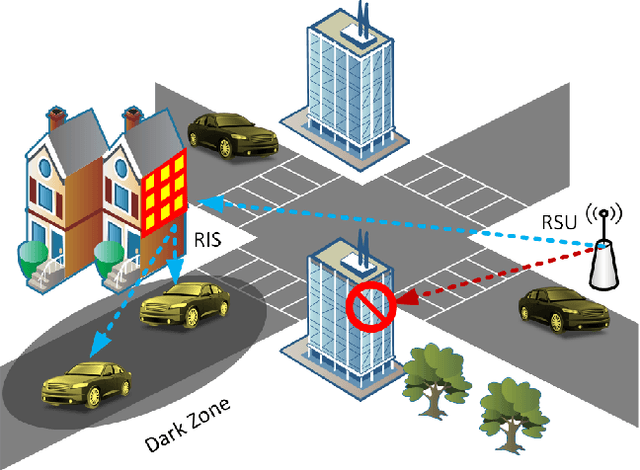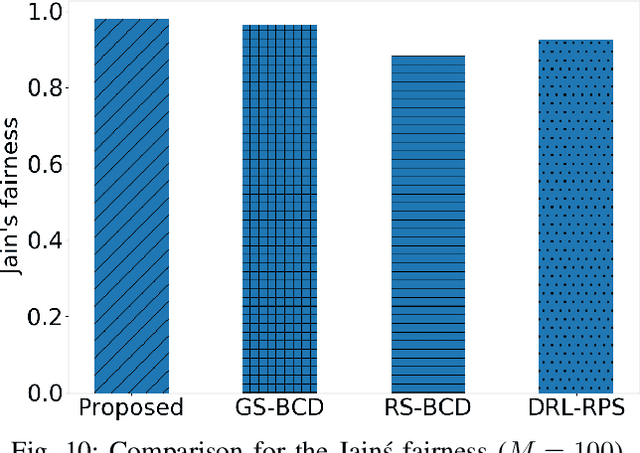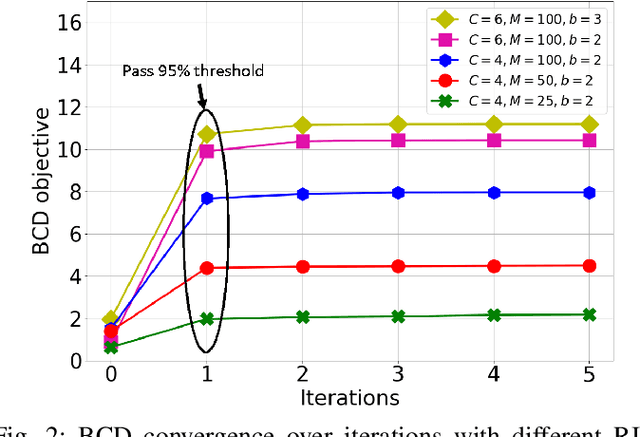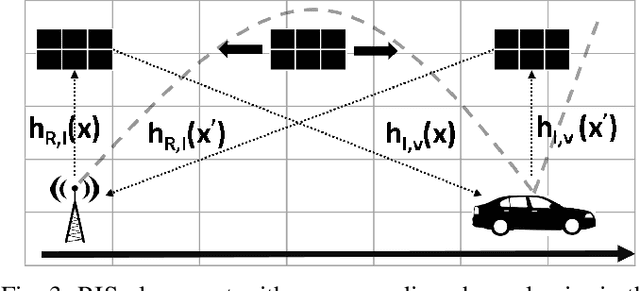Reconfigurable Intelligent Surface Enabled Vehicular Communication: Joint User Scheduling and Passive Beamforming
Paper and Code
Jan 28, 2021



Given its ability to control and manipulate wireless environments, reconfigurable intelligent surface (RIS), also known as intelligent reflecting surface (IRS), has emerged as a key enabler technology for the six-generation (6G) cellular networks. In the meantime, vehicular environment radio propagation is negatively influenced by a large set of objects that cause transmission distortion such as high buildings. Therefore, this work is devoted to explore the area of RIS technology integration with vehicular communications while considering the dynamic nature of such communication environment. Specifically, we provide a system model where RoadSide Unit (RSU) leverages RIS to provide indirect wireless transmissions to disconnected areas, known as dark zones. Dark zones are spots within RSU coverage where the communication links are blocked due to the existence of blockages. In details, a discrete RIS is utilized to provide communication links between the RSU and the vehicles passing through out-of-service zones. Therefore, the joint problem of RSU resource scheduling and RIS passive beamforming or phase-shift matrix is formulated as an optimization problem with the objective of maximizing the minimum average bit rate. The formulated problem is mixed integer non-convex program which is difficult to be solved and does not account for the uncertain dynamic environment in vehicular networks. Thereby, we resort to alternative methods based on Deep Reinforcement Learning to determine RSU wireless scheduling and Block Coordinate Descent (BCD) to solve for the phase-shift matrix, \textit{i.e.,} passive beamforming, of the RIS. The Markov Decision Process (MDP) is defined and the complexity of the solution approach is discussed. Our numerical results demonstrate the superiority of our proposed approach over baseline techniques.
 Add to Chrome
Add to Chrome Add to Firefox
Add to Firefox Add to Edge
Add to Edge